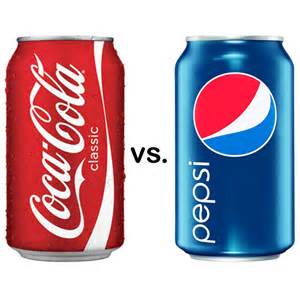
So if you are in business then chances are very high that you will have competitors who will be competing with you for a piece of the market share. Competition is likely to be stronger if the industry is highly profitable. The more the profits, the stronger the competition! Good examples exist in industries such as the Fast Moving Consumer Goods (FMCG) and the Telecommunication industry. Competition is everywhere even at growth points-at the tuck shop next door or the ladies cooking sadza and braaing meat at Mereki (Mai George). In the NGO world they are also competing against each other for funding and other resources. Governments compete for investment, churches compete for congregants-so competition is something we have to live with and learn how to manage.
One important area in business management is that of knowing who your competitors are. How strong are they? What are the risks that they pose to your business? What are they up to? Have they been taking your customers lately? Are they investing in advanced machinery?
We can add a thousand more questions about competitors but the bottom line is that you should be aware of your competitors-be clued up with every move that they take so that you are not caught unaware. We urge you to be cautious though-do not spend all of your time analysing and focusing on them. You should spend more time executing your own strategy!
Below we look at systematic ways of analyzing your Competitors and information has been taken from Wikipedia.
Competitor analysis in marketing and strategic management is an assessment of the strengths and weaknesses of current and potential competitors. This analysis provides both an offensive and defensive strategic context to identify opportunities and threats. Profiling coalesces all of the relevant sources of competitor analysis into one framework in the support of efficient and effective strategy formulation, implementation, monitoring and adjustment.
Competitor analysis is an essential component of corporate strategy. It is argued that most firms do not conduct this type of analysis systematically enough. Instead, many enterprises operate on what is called “informal impressions, conjectures, and intuition gained through the tidbits of information about competitors every manager continually receives.” As a result, traditional environmental scanning places many firms at risk of dangerous competitive blindspots due to a lack of robust competitor analysis.
Competitor analysis
One common and useful technique is constructing a competitor array. The steps include:
- Define your industry – scope and nature of the industry.
- Determine who your competitors are.
- Determine who your customers are and what benefits they expect.
- Determine what the key strengths for example price, service, convenience, inventory, etc.
- Rank the key success factors by giving each one a weighting – The sum of all the weightings must add up to one.
- Rate each competitor on each of the key success factors.
- Multiply each cell in the matrix by the factor weighting.
Competitor profiling
The strategic rationale of competitor profiling is powerfully simple. Superior knowledge of rivals offers a legitimate source of competitive advantage. The raw material of competitive advantage consists of offering superior customer value in the firm’s chosen market. The definitive characteristic of customer value is the adjective, superior. Customer value is defined relative to rival offerings making competitor knowledge an intrinsic component of corporate strategy. Profiling facilitates this strategic objective in three important ways. First, profiling can reveal strategic weaknesses in rivals that the firm may exploit. Second, the proactive stance of competitor profiling will allow the firm to anticipate the strategic response of their rivals to the firm’s planned strategies, the strategies of other competing firms, and changes in the environment. Third, this proactive knowledge will give the firms strategic agility. Offensive strategy can be implemented more quickly in order to exploit opportunities and capitalize on strengths. Similarly, defensive strategy can be employed more deftly in order to counter the threat of rival firms from exploiting the firm’s own weaknesses.
Clearly, those firms practicing systematic and advanced competitor profiling have a significant advantage. As such, a comprehensive profiling capability is rapidly becoming a core competence required for successful competition. An appropriate analogy is to consider this advantage as akin to having a good idea of the next move that your opponent in a chess match will make. By staying one move ahead, checkmate is one step closer. Indeed, as in chess, a good offense is the best defense in the game of business as well.
A common technique is to create detailed profiles on each of your major competitors. These profiles give an in-depth description of the competitor’s background, finances, products, markets, facilities, personnel, and strategies. This involves:
- Background
- location of offices, plants, and online presences
- history – key personalities, dates, events, and trends
- ownership, corporate governance, and organizational structure
- Financials
- P-E ratios, dividend policy, and profitability
- various financial ratios, liquidity, and cash flow
- profit growth profile; method of growth (organic or acquisitive)
- Products
- products offered, depth and breadth of product line, and product portfolio balance
- new products developed, new product success rate, and R&D strengths
- brands, strength of brand portfolio, brand loyalty and brand awareness
- patents and licenses
- quality control conformance
- reverse engineering or deformulation
- Marketing
- segments served, market shares, customer base, growth rate, and customer loyalty
- promotional mix, promotional budgets, advertising themes, ad agency used, sales force success rate, online promotional strategy
- distribution channels used (direct & indirect), exclusivity agreements, alliances, and geographical coverage
- pricing, discounts, and allowances
- Facilities
- plant capacity, capacity utilization rate, age of plant, plant efficiency, capital investment
- location, shipping logistics, and product mix by plant
- Personnel
- number of employees, key employees, and skill sets
- strength of management, and management style
- compensation, benefits, and employee morale & retention rates
- Corporate and marketing strategies
- objectives, mission statement, growth plans, acquisitions, and divestitures
- marketing strategies
Media scanning
Scanning competitor’s ads can reveal much about what that competitor believes about marketing and their target market. Changes in a competitor’s advertising message can reveal new product offerings, new production processes, a new branding strategy, a new positioning strategy, a new segmentation strategy, line extensions and contractions, problems with previous positions, insights from recent marketing or product research, a new strategic direction, a new source of sustainable competitive advantage, or value migrations within the industry. It might also indicate a new pricing strategy such as penetration, price discrimination, price skimming, product bundling, joint product pricing, discounts, or loss leaders. It may also indicate a new promotion strategy such as push, pull, balanced, short term sales generation, long term image creation, informational, comparative, affective, reminder, new creative objectives, new unique selling proposition, new creative concepts, appeals, tone, and themes, or a new advertising agency. It might also indicate a new distribution strategy, new distribution partners, more extensive distribution, more intensive distribution, a change in geographical focus, or exclusive distribution. Similar techniques can be used by observing a competitor’s search engine optimization targets and practices.[7] For example, by conducting keyword research, one may be able to determine a competitor’s target market, keywords, or products. Other metrics allow for detection of a competitor’s success.[8] Little of this intelligence is definitive: additional information is needed before conclusions should be drawn.
A competitor’s media strategy reveals budget allocation, segmentation and targeting strategy, and selectivity and focus. From a tactical perspective, it can also be used to help a manager implement his own media plan. By knowing the competitor’s media buy, media selection, frequency, reach, continuity, schedules, and flights, the manager can arrange his own media plan so that they do not coincide.
New competitors
In addition to analysing current competitors, it is necessary to estimate future competitive threats. The most common sources of new competitors are:
- Companies competing in a related product/market
- Companies using related technologies
- Companies already targeting your prime market segment but with unrelated products
- Companies from other geographical areas and with similar products
- New start-up companies organized by former employees and/or managers of existing companies
The entrance of new competitors is likely when:
- There are high profit margins in the industry
- There is unmet demand (insufficient supply) in the industry
- There are no major barriers to entry
- There is future growth potential
- Competitive rivalry is not intense
- Gaining a competitive advantage over existing firms is feasible
![]()





